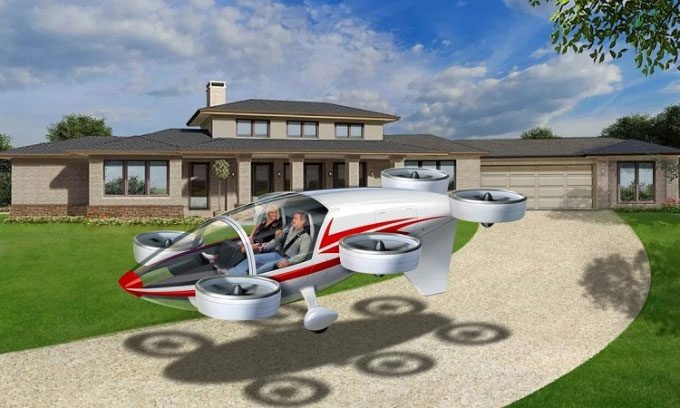The engine design features ducts along both sides and the rear of the vehicle, enabling the aircraft to take off vertically and move forward using thrust.

Design model of the Epiphany Transporter vehicle. (Photo: Applied eVTOL Concepts).
The company Applied eVTOL Concepts has unveiled plans to develop an Electric Vertical Takeoff and Landing (eVTOL) vehicle named Epiphany Transporter, capable of reaching a maximum speed of 258 km/h while maintaining noise levels below 55 decibels (dB) at an altitude of 15 meters. This noise level falls between the sound of steady rainfall (50 dB) and normal human conversation (60 dB), as reported by Space on August 18.
The secret lies in the thrust engine featuring ducts along the sides and rear of the Epiphany Transporter. In 2002, scientists at NASA’s Ames Research Center developed this engine design, which generates significant thrust comparable to that of jet engines or helicopter rotors.
The duct design also provides the advantage of protecting the rotating rotors that generate thrust within the ducts. Rob Bulaga, project engineer for the Epiphany Transporter at Applied eVTOL Concepts, is also a co-author of the 2002 research. The design has been refined over more than two decades since its initial testing at Ames. Michael Moshier, founder of Applied eVTOL Concepts, is confident that they have significantly upgraded the technology from the original concept tested in NASA’s wind tunnel.
“We have every reason to believe in the capabilities of our exclusive ducted thrust engine and the vehicle design, which can achieve the expected performance during flight,” Moshier shared. The aircraft is designed to carry two passengers and luggage. The company states that the Epiphany is roughly the size of a Tesla Model S and fits comfortably in a standard garage.


















































